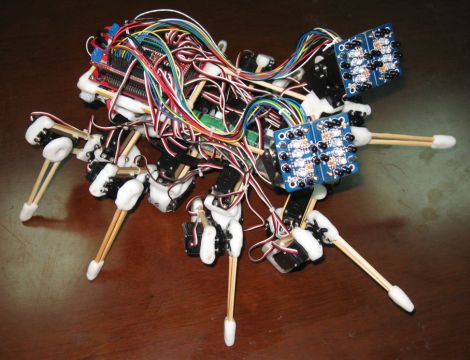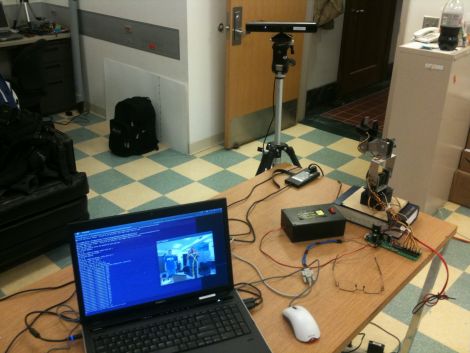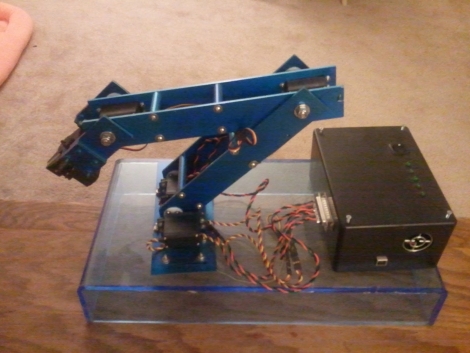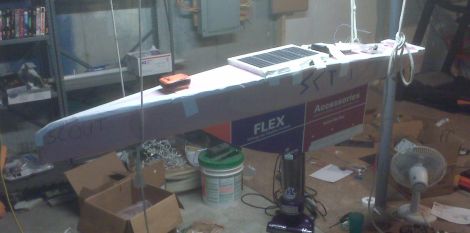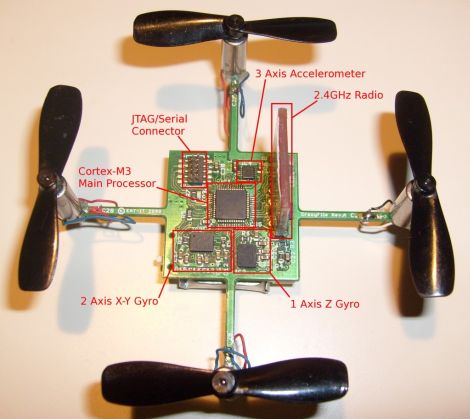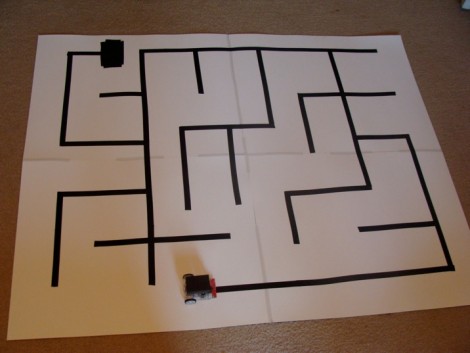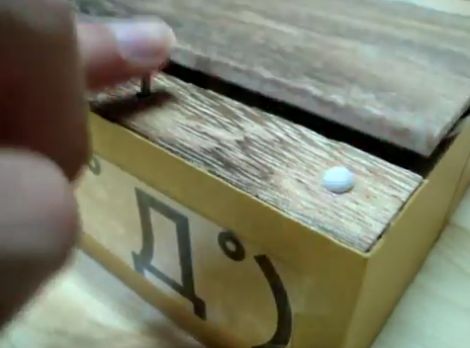
Hackaday reader [Danukeru] sent us a video featuring a box-based robot with an interesting personality. The box is fairly simple and from the outside seems to consist only of a switch and an LED. When the switch is flipped however, the box comes to life.
When the box is activated, the lid opens, and a small arm reaches out to turn the switch off. We’ve seen that plenty of times, but this one turns out to be a little different. In the video, this process seems to repeat a couple dozen times before the robot gets angry and flips out. At first we thought that the end portion of the video was done with a bit of digital trickery, but after reviewing the creator’s blog, it looks like it could be legit. It is very hard to see the box’s innards in the video, but it does house a remote control car chassis that allows it to move around and spin out, as seen below.
It’s a pretty neat project, and if you can handle reading the creator’s site via Google translate, there is plenty of picture documentation of the build process for your perusal.

